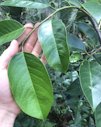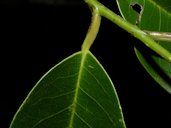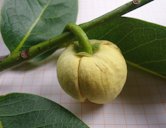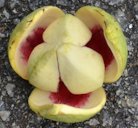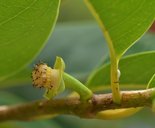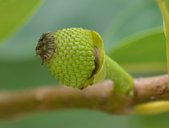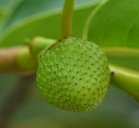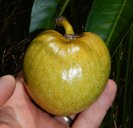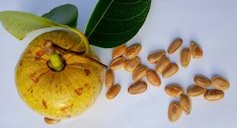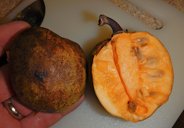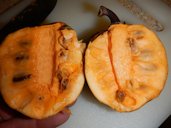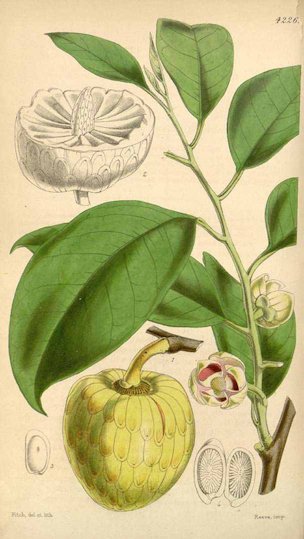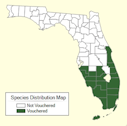| Pond Apple - Annona glabra | |||||||||||||||||||||||||||||||||||||||
|---|---|---|---|---|---|---|---|---|---|---|---|---|---|---|---|---|---|---|---|---|---|---|---|---|---|---|---|---|---|---|---|---|---|---|---|---|---|---|---|
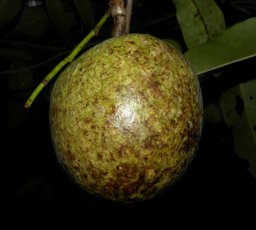 Fig. 1 Annona glabra, pond apple  Fig. 2 Osa Peninsula, Costa Rica 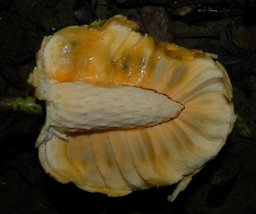 Fig. 3  Osa Peninsula, Costa Rica 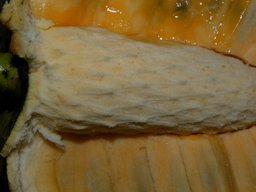 Fig. 4  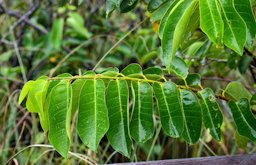 Fig. 5  Pond Apple, A. glabra., Miami-Dade, FL 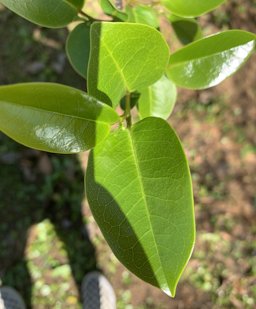 Fig. 6  Florida Gulf Coast University, Fort Myers, FL 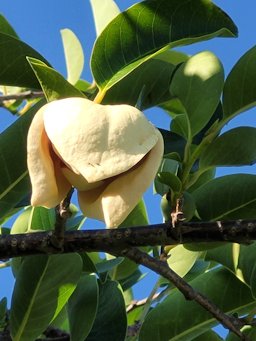 Fig. 11 Fig. 11  Pond apple, A. glabra, Naples, FL 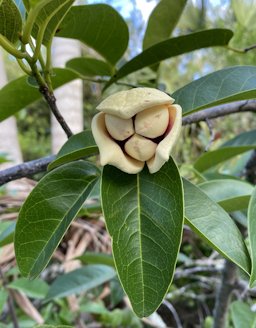 Fig. 12  Pond apple, Turtle Island, Naples, FL, USA 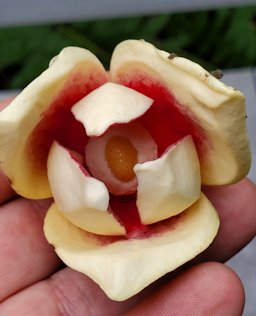 Fig. 13  A. glabra, Broward County, FL, USA 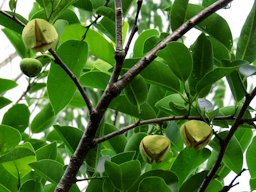 Fig. 14  Flower habit, Martin County, FL, USA 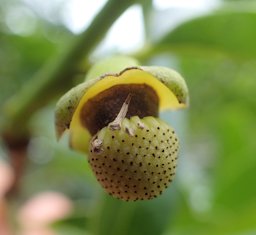 Fig. 21  Puntarenas Province, Costa Rica 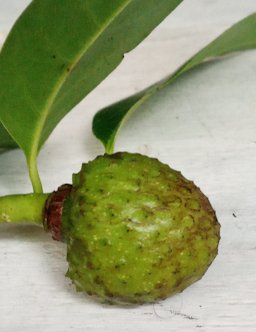 Fig. 22  A. glabra, Parque Sao Joao, Paranagua, Brazil  Fig. 23  McDowell Dr, North Fort Myers, FL, USA 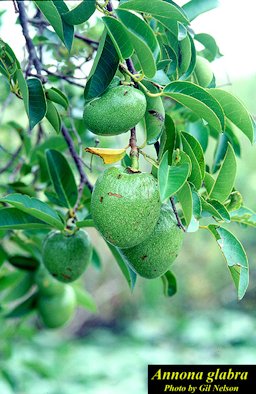 Fig. 29  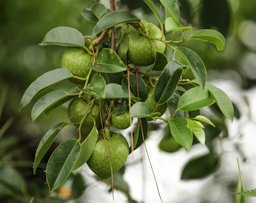 Fig. 30  Fruit habit, Palm Beach County, FL, USA 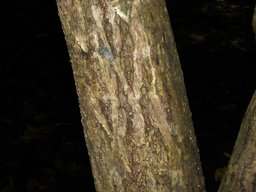 Fig. 31  Osa Peninsula, Costa Rica 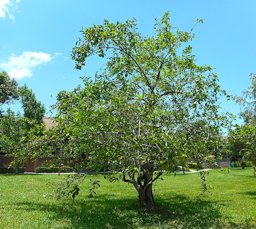 Fig. 32  A. glabra tree 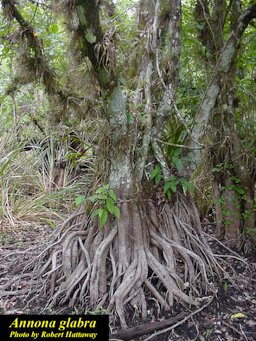 Fig. 33  In wet sites, older specimens develop enlarged, fluted or buttressed bases 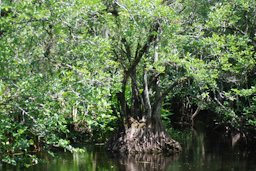 Fig. 34  Corkscrew, FL, USA 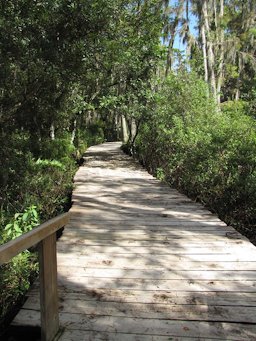 Fig. 35  A. glabra, (Pond apple), tree hanging over boardwalk, Loxahatchee National Wildlife Refuge, Florida 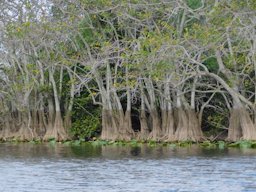 Fig. 36  Everglades Holiday Park, Fort Lauderdale, FL, US 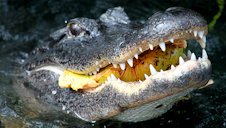 Fig. 37  Gator eats pond apple |
Scientific
name Annona glabra L. Pronunciation ahn-NOE-nah-GLAY-brah 4 Common names English: alligator apple, bob wood, corkwood, cow apple, mangrove annona, monkey apple, pond apple; Brazil: araticum-bravo, araticum do bréjo, araticum-caca, araticum-cortiça, araticupana, araticum-do-mangue, araticum de mangue, araticum-d’água, araticum-da-lagoa, araticum- da-praia, araticum-de-boi, araticum-de- jangada, araticum-do-bréjo, araticum do Rio, araticunzeiro-do-brejo, caroáo, cortisso, maçã- de-cobra, mulato, cortiça, birba, jaca-de-pobre (Portuguese); Chinese: niu xin guo, yuan xi fan li zhi; Czech: láhevník lysý; Danish: mangroveannona; Eastonian: sile annoona; Fijian: kaitambo, kaitambu, uto ni bulumakau, uto ni mbulumakau; French: anone des marais, bois flot, cachiman cochon, corossol des narais, guanamin, mamain; German: Alligatorapfel, Wasserapfel, Mangroven-Annone; Guatemala: guanaba; Martinique: mamain; Nicaragua: anona de Río; Japanese: pondo appuru; Portuguese: araticum do bréjo, araticum de Rio, araticurana; Spanish: anona lisa, anón liso, anon de puerco, anonillo cabuye, bagá, cayur, cayuda, corcho, cortisso, chirimoya de los pantanos, chirimoya cimarrona, corazón cimarrón, palo bobo; Vietnamese: bình bát 1,2,8 Synonyms A. australis A.St.-Hil., A. chrysocarpa Lepr. ex Guill. & Perr., A. chrysocarpa Leprieur Ex Guillemet, A. klainei Pierre ex Engl. & Diels, A. klainii Pierre ex Engl. & Diels, A. klainii var. moandensis De Wild., A. laurifolia Dunal, A. palustris L., A. palustris var. grandifolia Mart., A. peruviana Humb. & Bonpl. ex Dunal, A. uliginosa Kunth, Asimina arborea Raf., Guanabanus palustris M. Gómez 6 Relatives Cherimoya (A. cherimola), soursop (A. muricata), custard apple (A. reticulata), sugar apple (A. squamosa), ilama (A. diversifolia), atemoya (A. cherimola x A. squamosa), mountain soursop (A. montana), poshte (A. scleroderma) Family Annonacaea (annona family) Origin Native from Florida to the Yucatan peninsula and to south Brazil 2 USDA hardiness zones 10A-12B 2 Uses Mitigation, restoration; accent tree in wet or mucky soils; along the edges of ponds and lakes; Wwater gardens 2,3 Height 30-40 ft tall (3-6 m) 2 Spread 10-20 ft (3-6 m) 2 Crown Broad and irregular 2 Plant habit Large shrub to medium-sized tree 2 Growth rate Moderate 2 Trunk/bark/branches Usually single short trunk; great variation in bark appearance; twigs spotted with reddish brown; warty; lenticels (Fig. 23) 2 Leaves Deciduous, semi-deciduous; often oval; pointed tip; glossy 4 Flowers Up to 1 in. (2.5 cm) across; whitish or greenish with dark red markings 4 Fruit Oblong, elliptical; sweet aroma; yellow-orange mealy flesh Season Most fruits mature in the fall and into winter 2 Light requirement Full sun to light shade 3 Soil tolerances Tolerates a wide range of soils pH preference Tolerates a wide range 2 Drought tolerance Medium 2 Salt tolerance Moderate 2 Salt wind tolerance Moderate; grows near salt water, but is protected from direct salt spray by other vegetation 3 Cold tolerance 30 °F (-1.1 °C) 2 Roots Buttressed base (Fig. 33) Invasive potential * Non reported in Florida; listed as a restricted invasive weed of national significance in Australia 8 Known hazard Seed powder has caused blindness 4 Reading Material Pond Apple - A Tree Species Adapted to Salt Stress, University of Florida pdf Annona glabra, University of Florida, Lee County pdf Pond Apple, Annona glabra, Encyclopedia of Life Origin Pond apple (Annona glabra) is native from Florida to the Yucatan peninsula and to south Brazil. It appears to have naturally colonized West Africa from seeds transported on water from Tropical America. Manatee County on the west coast and Brevard County on the east represent the northern limit of its distribution in Florida. 2
Description Pond apple occurs at the margin of sloughs, streams and lakes over a wide area (Fig. 34,35,36). It flourishes often in the presence of bald cypress (Taxodium distichum) trees. The species once formed an almost continuous forest at the southern end of Lake Okeechobee but drainage has destroyed this habitat. Today, the largest populations are in the Everglades and small groupings can be found throughout South Florida. The Tree is a vital component of the Florida Comprehensive Everglades Restoration Plan. Ironically, it has become naturalized and a major weed in northeast Queensland, Australia. It is also a problem in Fiji and Sri Lanka. 2 With age, trunks become crooked displaying upcurved branches. In wet sites, older specimens develop enlarged, fluted or buttressed bases, somewhat like bald cypress trees (Taxodium distichum). 2 Leaves The leaves are simple, entire and alternately arranged. Leaf blades are ovate to oblong, commonly 4 to 8 inches long and 2 to 4 inches wide. Leaves on basal suckers are the largest. Leaf blades are tapered at the base and have a short pointed apex. Leathery, glossy, and dark green above, they turn upward to form a v-shape along a prominent midrib. The petioles are short, usually 0.5 to 1.0 inch long. If crushed, the leaves emit a characteristic Annona fragrance that can be used to identify the tree in case of potential confusion. 2
Fig. 7. Pond Apple, A. glabra, Heron Point Dr, Naples, FL, US Fig. 8. Sarasota, FL 34231, USA Fig. 9. Big Cypress National Preserve, Ochopee, FL, US Fig. 10. Osa Peninsula, Costa Rica Flowers The flowers appear solitary with an occasional multiple at the base of the new shoots. Perfect flowers are attached to stout stems. There are two whorls of fleshy petals with the three large outer petals enclosing the three smaller inner petals. The petals are distinctly triangular shaped. The outer petals are creamy -white to pale greenish yellow when fresh and from 0.5 to 1 inch long. The inner three petals are narrower, whitish or dull greenish outside, usually blood-red within or spotted with red or wine-color near the base. Flowers begin to emerge in abundance in the spring, but depending on the environment, flowers can be produced year-round. Blooms open at night and emit their fragrance as a lure to entice beetles to enter the center chamber to effect pollination between the stamens and stigmas. 2
Fruit Conical to five inches long, smooth, rich yellow skin, pulp salmon-yellow in dry segments. Musky, subacid, resinous flavor, not desirable. Some fruit reach edible quality. Seeds NOT edible. Boiling the fruit makes it a bit more palatable. Can be made into a jelly. 4 Fruits are oblong to elliptical-shaped. They are usually 3 to 5 inches long and 2.5 to 3.5 inches in diameter. The surface is slightly outlined, but never elevated or scaly like other fruits in the genus. Indehiscent mature fruits begin falling from trees in late summer. However, most fruits mature in the fall and into winter. They drop from trees while still green or when greenish-yellow. Both fruits and seeds float and remain viable for many months. 2 Mature fruit have a sweet aroma. The pulp is fleshy, mealy and pithy. The color is yellowish-orange. Ripe fruits are considered edible but unpalatable to humans. When ripe, the thick stem easily pulls away from the fruit leaving a central cavity. 2
Propagation Both the fruit and the seed float (an adaptation which facilitates dispersal in flowing water). The hard seeds can remain viable for considerable periods in either fresh, brackish or sea water. 8 Pond apple (Annona glabra L.) is a highly flood-tolerant tropical fruit tree species that shows promise as a flood-tolerant rootstock for commercial Annona species. 5 Fertilizing Pond apples have low nutritional requirements and fertilization is unnecessary. 2 Food Uses The fruits are of inferior quality compared with closely related species of the same family. 9 The pulp, with a fruity, agreeable taste reminiscent of banana and overripe pineapple, is sometimes eaten fresh. Fully ripe pond apples are used to make jams, jellies, and fruit wine. 9 Some trees do produce nice fruits and the species has its admirers. 10 Medicinal Properties **' In Guayana, a tea is made from the leaves and used to treat flatworms and nematodes. In parts of its range, the seeds have been crushed and boiled and used externally to get rid of lice. 11 Other Uses Leaves and seeds are insecticidal. Leaves in hens’ nests kills lice on hens. Its seeds can be used to poison fish. 4 The light and soft wood is used to substitute cork in fishing nets. The fruit can be used as forage for cattle. Softwood and roots are used as fish floats. Bark is an excellent home for orchids and other air plants. 7,8 The Miccosukee used pond apple as a food, but also to make lye and used the wood to make spoons. 11 General Annona is from the Taino word for the tree. Squamosa means scaly, muricata is roughened, reticulata means netted, and glabra smooth or hairless. 4 The common name alligator apple reflects the fact that alligators in the Everglades swamps of southern Florida sometimes eat the ripe fruits that fall in the water (image below). 9 It needs wet soil; it will grow in clumps, essentially forming islands where birds can roost and breed in relative safety, free of predators like raccoons. Their presence in abundance at Wakodahatchee Wetlands in Delray Beach, have made the preserve an important rookery (nesting spot) for at least a half-dozen species of birds, including anhingas (Anhinga anhinga) and wood storks (Mycteria americana). 11 Other Edibles in the Annona genus: Soursop (A. muricata) Sugar apple (A. squamosa) Ilama (A. macroprophyllata) Custard Apple (A. reticulata) Atemoya (A. cherimola x A. squamosa) Poshte (A. scleroderma) Cherimoya (A. cherimola) Biriba (Rollinia mucosa, A. mucosa)
Fig. 40. A. glabra distribution map, wild populations Further Reading Clonal propagation of pond apple (Annona glabra L.), a flood-tolerant rootstock for commercial annona species, Hort Science pdf List of Growers and Vendors |
||||||||||||||||||||||||||||||||||||||
| Bibliography 1 Liu, Guodong, et al. " Pond Apple - A Tree Species Adapted to Salt Stress." Horticultural Sciences Dept., UF/IFAS Extension, HS1281, Original pub. Apr.2016, Revised Feb. 2019 and June 2022, AskIFAS, edis.ifas.ufl.edu/publication/HS1281. Accessed 21 Aug. 2021, 5 Jan. 2024. 2 Brown, Stephen H. "Annona Glabra." Lee County Extension Fact Sheets, UF/IFAS, Archived, drive.google.com/file/d/1MrvCUXzoSVuf2cx9TlgXLMVJKF3Y6zGG/view. Accessed 21 Aug. 2021. 3 Gann GD, et al. "Pond Apple, Annona glabra, Annonaceae." The Institute for Regional Conservation, 2005-2021, Natives For Your Neighborhood, Delray Beach, Florida, NFYN Database, www.regionalconservation.org/beta/nfyn/plantdetail.asp?tx=Annoglab&tx=Annoglab. Accessed 21 Aug. 2021. 4 Deane, Green. "Annona glabra." Annona Quartet, Eat the Weeds and other things, too, www.eattheweeds.com/annonas-quartet/. Accessed 21 Aug. 2021. 5 Nunez-Elisea, R., et al. "Clonal propagation of pond apple (Annona glabra L.), a flood-tolerant rootstock for commercial annona species." Proceedings of the Florida State Horticultural Society, Vol. 113, 2000, Krome Memorial Institute (Tropicals), 1 Dec. 2000, journals.flvc.org/fshs/article/view/90947. Accessed 21 Aug. 2021. 6 "Annona glabra L. synonyms." World Flora Online, 2021, WFO, www.worldfloraonline.org/taxon/wfo-0000537770. Accessed 23 Aug. 2021. 7 "Annona glabra L." Trees and Shrubs of the Maldives, FAO, www.fao.org/forestry/14635-087ce4f27d7aee9662f6996003709769c.pdf. Accessed 23 Aug. 2021. 8 Lim, T. K. "Edible medicinal and non-medicinal plants, Fruits, vol. 1." ZLibrary, 2012, 1lib.us/book/1310933/1bdc97. Accessed 23 Aug. 2021. 9 Blancke, Rolf. "Tropical Fruits and Other Edible Plants of the World: An Illustrated Guide." Zlibrary, 2016, b-ok.cc/book/3414166/f1bf9d?dsource=recommend. Accessed 23 Aug. 2021. 10 "Pond Apple, Annona glabra." Trade Winds Fruit, www.tradewindsfruit.com/content/pond-apple.htm. Accessed 23 Aug. 2021. 11 "Pond Apple, Annona glabra." Wild South Florida, wildsouthflorida.com/pond.apple.html. Accessed 24 Aug. 2021. Videos v1 "Annonas with Har, Introduction." Truly Tropical Farms, 6 Jan. 2021, (CC0), www.youtube.com/watch?v=V-0JiXT7s5s. Accessed 7 Aug. 2021. Photographs Fig. 1 Aguilar, Reinaldo. "Annona glabra L." Vascular Plants of the Osa Peninsula, Costa Rica, 28 Aug. 2012, Flickr, (CC BY-NC-SA 2.0), www.flickr.com/photos/plantaspeninsulaosa/7940076128/. Accessed 22 Aug. 2021. Fig. 2 Aguilar, Reinaldo. "Annona glabra L." Vascular Plants of the Osa Peninsula, Costa Rica, 28 Aug. 2012, Flickr, (CC BY-NC-SA 2.0), www.flickr.com/photos/plantaspeninsulaosa/7940074942/. Accessed 22 Aug. 2021 Fig. 3 Aguilar, Reinaldo. "Annona glabra L." Vascular Plants of the Osa Peninsula, Costa Rica, 28 Aug. 2012, Flickr, (CC BY-NC-SA 2.0), www.flickr.com/photos/plantaspeninsulaosa/7940074186/. Accessed 22 Aug. 2021. Fig. 4 Aguilar, Reinaldo. "Annona glabra L." Vascular Plants of the Osa Peninsula, Costa Rica, 28 Aug. 2012, Flickr, (CC BY-NC-SA 2.0), www.flickr.com/photos/plantaspeninsulaosa/7940073282/. Accessed 22 Aug. 2021. Fig. 5 Torres, David. "Pond Apple, Annona glabra, Miami-Dade, FL, USA." iNaturalist, Research Grade, 15 Aug. 2021, (CC BY-NC 4.0), www.inaturalist.org/observations/91344180. Accessed 21 Aug. 2021. Fig. 6 Corasaniti, Sophia. "Pond Apple, Annona glabra, Florida Gulf Coast University, Fort Myers, FL, US." iNaturalist, Research Grade, 9 Mar. 2021, Image cropped, (CC BY-NC 4.0), www.inaturalist.org/observations/70862874. Accessed 22 Aug. 2021. Fig. 7 rbrentson. "Pond Apple, Annona glabra, Heron Point Dr, Naples, FL, US." iNaturalist, Research Grade, 7 Jan. 2021, (CC BY-NC 4.0), www.inaturalist.org/observations/67715742. Accessed 22 Aug. 2021. Fig. 8 Patton, Pete. "Pond Apple, Annona glabra, Martin County, FL, USA." iNaturalist, Research Grade, 26 Apr. 2020, (CC BY-NC 4.0), www.inaturalist.org/observations/43722521. Accessed 22 Aug. 2021. Fig. 9 loganarbuckle. "Pond Apple, Annona glabra, Big Cypress National Preserve, Ochopee, FL, US." iNaturalist, Research Grade, 24 June 2020, Image cropped, (CC BY-NC 4.0), www.inaturalist.org/observations/50791656. Accessed 22 Aug. 2021. Fig. 10 Aguilar, Reinaldo. "Annona glabra L." Vascular Plants of the Osa Peninsula, Costa Rica, 28 Aug. 2012, Flickr, (CC BY-NC-SA 2.0), www.flickr.com/photos/plantaspeninsulaosa/7940078240/. Accessed 22 Aug. 2021. Fig. 11 alex861. "Pond Apple, Annona glabra, Naples, FL, USA." iNaturalist, Research Grade, 14 May 2021, (CC BY-NC 4.0), www.inaturalist.org/observations/78757290. Accessed 21 Aug. 2021. Fig. 12 bhrbabydoc. "Pond Apple, Annona glabra, Turtle Island, Naples, FL, USA." iNaturalist, Research Grade, 27 Apr. 2021, (CC BY-NC 4.0), www.inaturalist.org/observations/75417662. Accessed 21 Aug. 2021. Fig. 13 saltchunk. "Pond Apple, Annona glabra, Broward County, FL, USA." iNaturalist, Research Grade, 21 Apr. 2021, (CC BY-NC 4.0), www.inaturalist.org/observations/74765223. Accessed 21 Aug. 2021. Fig. 14 Grannis, Sean. "Pond Apple, Annona glabra, Sarasota, FL 34231, USA." iNaturalist, Research Grade, 23 Apr. 2020, (CC BY-NC 4.0), www.inaturalist.org/observations/42993595. Accessed 22 Aug. 2021. Fig. 15 Popovkin, Alex. "Annona glabra L., Bahia, Brazil.' Flickr, 8 Jan. 2012, (CC BY-NC-SA 2.0), www.flickr.com/search/?user_id=12589168%40N00&view_all=1&text=annona glabra. Accessed 23 Aug. 2021.; Fig. 16 Cerlin Ng. "Annona glabra." Flickr, 29 Jan. 2015, (CC BY-NC-ND 2.0), Image cropped, www.flickr.com/photos/89906643@N06/16237108328/. Accessed 24 Aug. 2021. Fig. 17 Cerlin Ng. "Annona glabra." Flickr, 29 Jan. 2015, (CC BY-NC-ND 2.0), Image cropped, www.flickr.com/photos/89906643@N06/16424743995/. Accessed 24 Aug. 2021. Fig. 18 Cerlin Ng. "Annona glabra." Flickr, 24 Mar. 2015, (CC BY-NC-ND 2.0), Image cropped, www.flickr.com/search/?user_id=89906643%40N06&view_all=1&text=annona glabra. Accessed 24 Aug. 2021. Fig. 19 Cerlin Ng. "Annona glabra." Flickr, 1 Apr. 2015, (CC BY-NC-ND 2.0), Image cropped, www.flickr.com/search/?user_id=89906643%40N06&view_all=1&text=annona glabra. Accessed 24 Aug. 2021. Fig. 20 Cerlin Ng. "Annona glabra." Flickr, 1 Apr. 2015, (CC BY-NC-ND 2.0), Image cropped, www.flickr.com/photos/89906643@N06/16945206070/. Accessed 24 Aug. 2021. Fig. 21 Joyce, Richard. "Pond Apple, Annona glabra, Puntarenas Province, Costa Rica." iNaturalist, Research Grade, 1 Mar. 2020, (CC BY-NC 4.0), www.inaturalist.org/observations/39429632. Accessed 22 Aug. 2021. Fig. 22 alex. "Pond Apple, Annona glabra, Parque Sao Joao, Paranagua - PR, Brazil." iNaturalist, Research Grade, 22 Dec. 2020, Image cropped, (CC BY-NC 4.0), www.inaturalist.org/observations/66935528. Accessed 22 Aug. 2021. Fig. 23 Colley, Betina. "Pond Apple, Annona glabra, McDowell Dr, North Fort Myers, FL, USA." iNaturalist, Research Grade, 5 July 2020, (CC BY-NC 4.0), www.inaturalist.org/observations/52028870. Accessed 22 Aug. 2021. Fig. 24,26,27 Stauffer, Jeff. "Pond Apple, Annona glabra, Miami-Dade County, FL, USA." iNaturalist, Research Grade, 21 Dec. 2019, Image cropped, (CC BY-NC 4.0), www.inaturalist.org/observations/36822021. Accessed 22 Aug. 2021. Fig. 25 Filo gèn'. "Pond Apple." Wikimedia Commons, 4 July 2019, GFDL, (CC BY-SA 4.0), (CC BY-SA 3.0), (CC BY-SA 2.5), (CC BY-SA 2.0), (CC BY-SA 1.0), commons.wikimedia.org/wiki/File:Annona_glabra_-_Fruit_and_seeds.jpg. Accessed 23 Aug. 2021. Fig. 28 Cerlin Ng. "Annona glabra." Flickr, 11 Mar. 2015, (CC BY-NC-ND 2.0), www.flickr.com/photos/89906643@N06/16892045662/. Accessed 24 Aug. 2021. Fig. 29 Nelson, Gil. "Annona glabra." Institute for Systematic Botany, University of South Florida, Tampa, S. M. Landry and K. N. Campbell (application development), USF Water Institute, 2020, Image cropped, Atlas of Florida Plants, florida.plantatlas.usf.edu/photo.aspx?ID=2172. Accessed 21 Aug. 2021. Fig. 30 Martin, Chuck. "Pond Apple, Annona glabra, Palm Beach County, FL, USA." iNaturalist, Research Grade, 6 July 2018, Image cropped, (CC BY-NC 4.0), www.inaturalist.org/observations/14120525. Accessed 22 Aug. 2021. Fig. 31 Aguilar, Reinaldo. "Annona glabra L." Vascular Plants of the Osa Peninsula, Costa Rica, 28 Aug. 2012, Flickr, (CC BY-NC-SA 2.0), www.flickr.com/photos/plantaspeninsulaosa/7940079508/. Accessed 22 Aug. 2021. Fig. 32 Di Palma, Daniel. "Annona glabra tree." Wikimedia Commons, 8 July 2018, (CC BY-SA 4.0), Image cropped, commons.wikimedia.org/wiki/File:Annona_glabra_04_-_Tree.jpg. Accessed 23 Aug. 2021. Fig. 33 Hattaway, Robert. "Annona glabra." Institute for Systematic Botany, University of South Florida, Tampa, S. M. Landry and K. N. Campbell (application development), USF Water Institute, 2020, Image cropped, Atlas of Florida Plants, florida.plantatlas.usf.edu/photo.aspx?ID=2172. Accessed 21 Aug. 2021. Fig. 34 Thing, A Humble. "Pond Apple, Annona glabra, Corkscrew, FL, USA." iNaturalist, Research Grade, 25 Apr. 2021, (CC BY-NC 4.0), www.inaturalist.org/observations/75222419. Accessed 22 Aug. 2021. Fig. 35 Starr, Forest, and Kim. "Annona glabra (Pond apple), tree hanging over boardwalk, Loxahatchee National Wildlife Refuge, Florida." Starr Environmental, 090926-6888, 26 Sept. 2009, (CC BY 4.0), www.starrenvironmental.com/images/image/?q=24881425331. Accessed 22 Aug. 2021. Fig. 36 fortnash, jade. "Pond Apple, Annona glabra, Puntarenas Province, Costa Rica." iNaturalist, Research Grade, 22 Feb. 2020, Public Domain, www.inaturalist.org/observations/39049291. Accessed 22 Aug. 2021. Fig. 37 Everglades NPS. "Gator Eats Pond Apple, Homestead, Florida." Wikimedia Commons, 21 Sept. 2012, (CC BY-SA 4.0), commons.wikimedia.org/wiki/File:Annona_glabra_04_-_Tree.jpg. Accessed 23 Aug. 2021. Fig. 38 "Annona Glabra (Pond Apple)." Treeworld Wholesale, 21 May 2013, Wikimedia Commons, (CC BY 2.0), commons.wikimedia.org/wiki/File:Annona_Glabra_(Pond_Apple)_(28260199433).jpg. Accessed 24 Aug. 2021. Fig. 39 Fitch, W.H. "Annona palustris L., Annona glabra L." Curtis, W., Botanical Magazine, 1800-1948, Bot. Mag. vol. 72, t. 4226, Missouri Botanical Garden, St. Louis, U.S.A., 1846, Plant Illustrations, www.plantillustrations.org/illustration.php?id_illustration=726. Accessed 23 Aug. 2021. Fig. 40 Wunderlin, R. P., et al. "Annona glabra." Institute for Systematic Botany, University of South Florida, Tampa, S. M. Landry and K. N. Campbell (application development), USF Water Institute, 2020, Atlas of Florida Plants, florida.plantatlas.usf.edu/Plant.aspx?id=2172. Accessed 24 Aug. 2021. * UF/IFAS Assessment of Non-native Plants in Florida's Natural Areas ** Information provided is not intended to be used as a guide for treatment of medical conditions. Published 25 Aug. 2021 LR. Last update 5 Jan. 2024 LR |
|||||||||||||||||||||||||||||||||||||||


